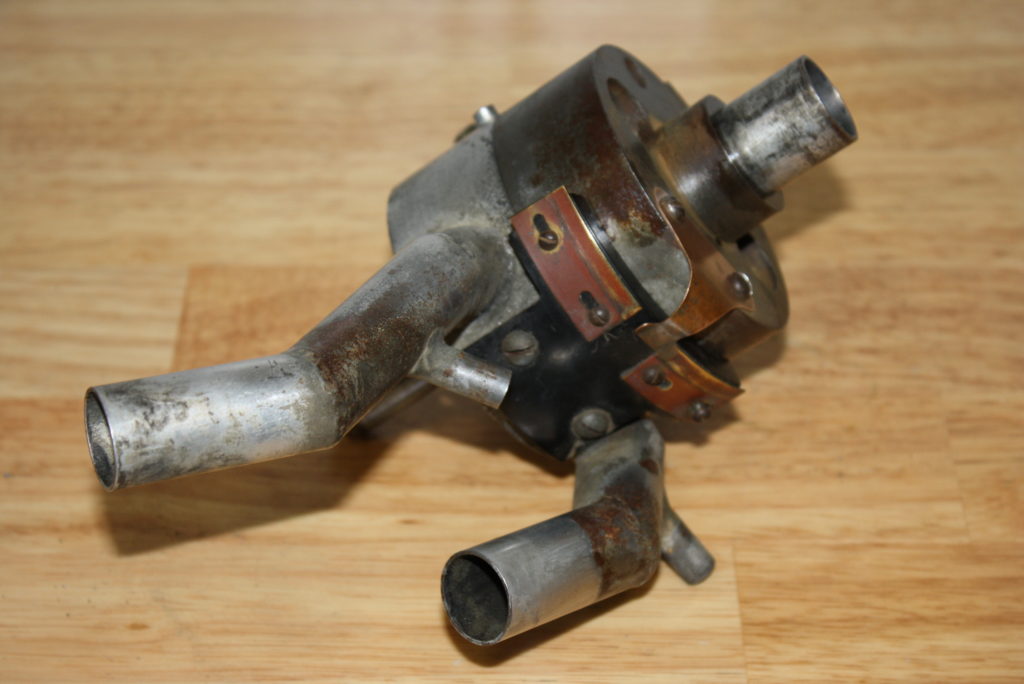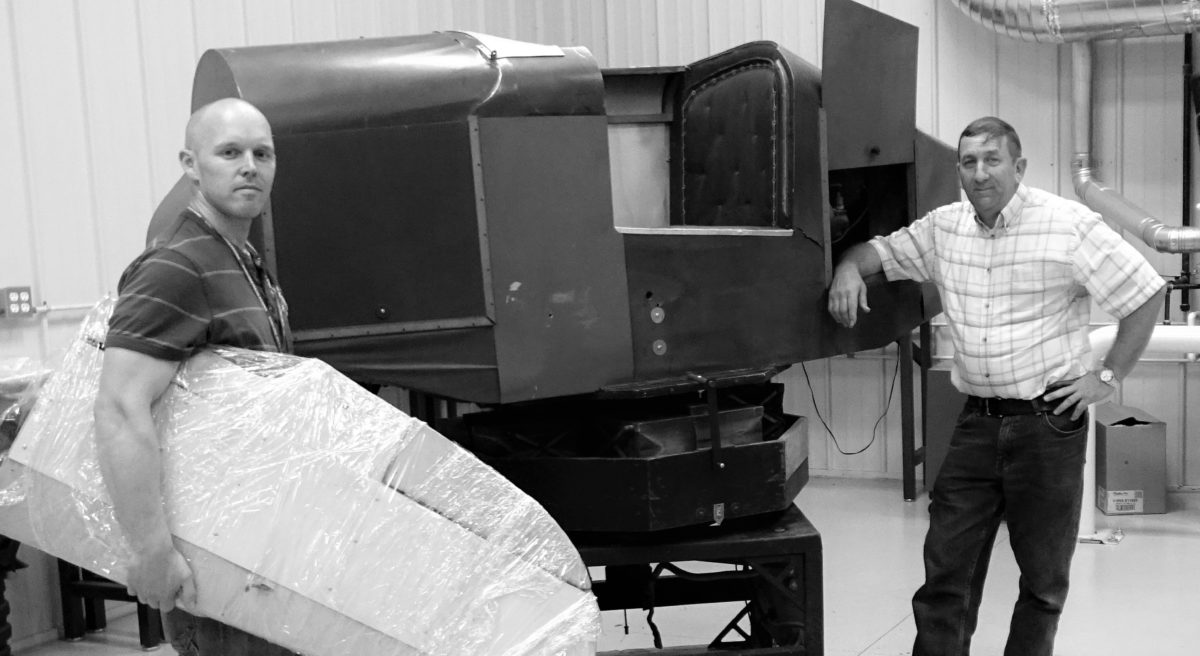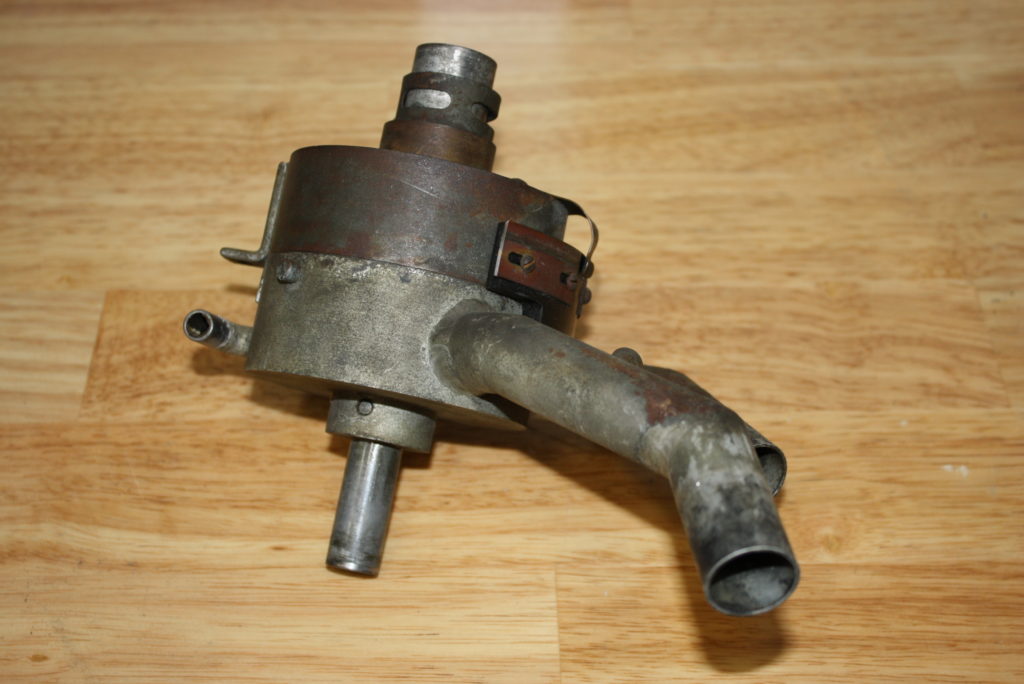
The rudder valve consists of two cylindrical mating sections. The upper section rotates relative to the fixed lower ported cylinder based on rudder and control yoke inputs. Holes drilled in the flat mating sections determine the direction of vacuum flow.
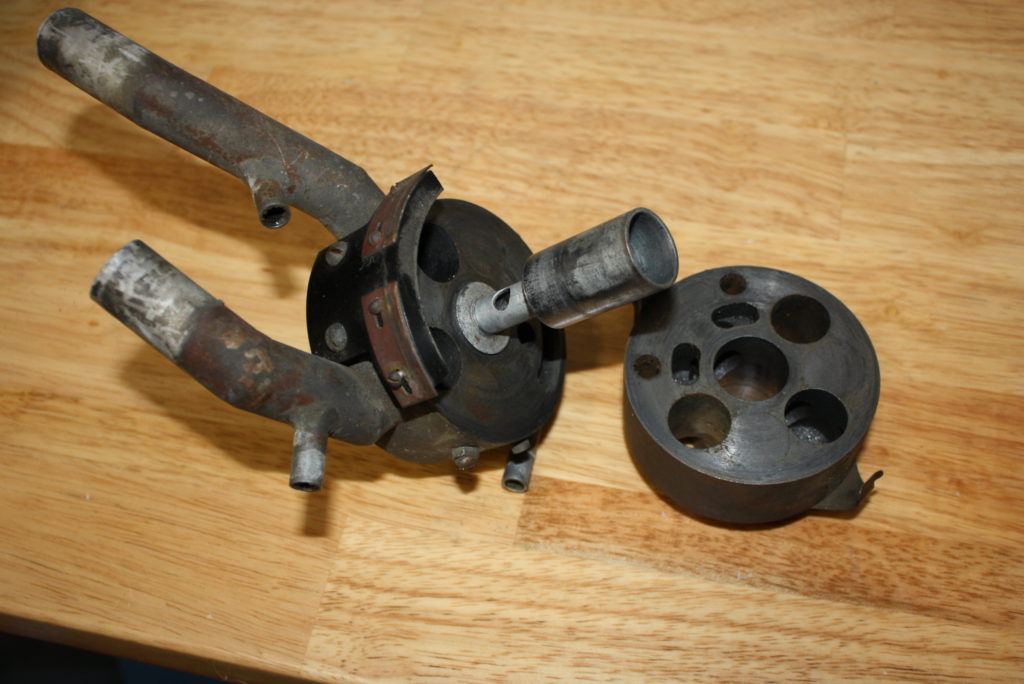
The rudder valve also includes electrical contacts which activate a compensation coil in the magnetic compass.
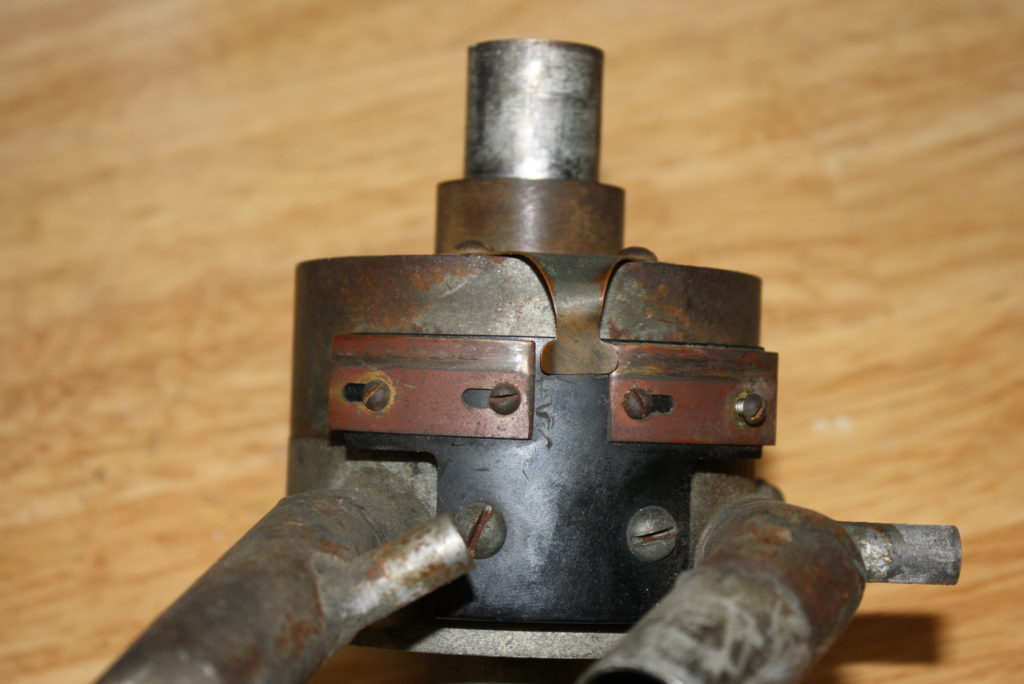
The two largest ports on the lower section of the rudder valve go to the left and right turning motor ports to control the yaw motion of the trainer. Drilled ports direct vacuum primarily to either the left or right hose going to the turning motor. As vacuum is directed to one or the other turning motor port, ports in the top valve section allow pressure to equalize with room air pressure to disable the other half of the turning motor drive. Smaller ports connected to these outputs connect to the two yaw keys on the rough air mechanism. A small amount of vacuum is continually lost to the rough air mechanism until the key is closed to momentarily boost the vacuum to the turning motor. Two smaller ports on the rudder valve are supplied by different shaped valve cutouts; they go to the lines connecting the elevator valve with the elevator section of the rough air mechanism. This simulates the interaction between elevator and rudder.
The rudder valve can be removed by disconnecting its drive linkage and associated hoses. A set screw on the bottom of the fuselage releases the rudder valve assembly for removal.
Our valve was very difficult to turn. We removed the valve, separated the sections, cleaned it up with wire brush and degreaser, then lubricated the mating surfaces with gun oil. It now turns easily.
